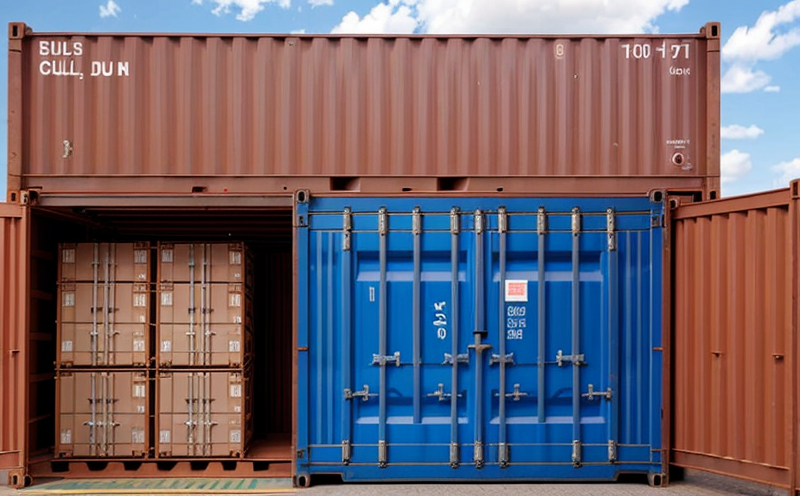Packaging & Container Closure System Testing
The integrity of pharmaceutical packaging and container closure systems is paramount to ensuring product safety, efficacy, and stability. This testing ensures that the package protects the drug from external factors such as light, moisture, oxygen, temperature variations, and microorganisms, while maintaining compatibility with the medication.
Container closure systems are critical components in aseptic manufacturing processes and must meet stringent requirements to prevent contamination during packaging operations. The primary goal is to evaluate whether the system can protect the product from degradation or contamination throughout its shelf life. Compliance with international standards like ISO 11607, ASTM F2385, and EN 16594 is essential to ensure that products meet regulatory requirements.
The testing process involves several key steps. Initially, the packaging materials are subjected to physical properties tests such as tensile strength, puncture resistance, and seal integrity. This helps in identifying any potential weaknesses or defects in the material before it is used for manufacturing.
- Physical Properties: Tensile Strength
- Puncture Resistance
- Seal Integrity Tests
Following the physical properties testing, the container closure system undergoes microbiological and chemical compatibility tests. These tests are crucial to ensure that there is no interaction between the packaging material and the drug product that could lead to degradation or contamination.
| Test Method | Description |
|---|---|
| ASTM E2196 | Microbial Intrusion Test to assess the integrity of closures against microorganisms. |
| ISO 10773-5 | Determination of chemical compatibility between container and product. |
The next step involves accelerated stability studies. These tests simulate real-world conditions over a short period to predict long-term behavior. The aim is to identify any potential issues that could arise during storage or distribution, such as leakage, diffusion, or interaction with the environment.
Finally, the package must undergo compatibility testing with the product it will contain. This includes ensuring that the packaging does not interfere with the drug's stability, efficacy, and safety. The testing is carried out using various methods depending on the type of container closure system and the specific requirements outlined by regulatory bodies.
Why It Matters
The pharmaceutical industry operates under stringent regulations to ensure that products are safe, effective, and of high quality. Packaging and container closure systems play a vital role in safeguarding the integrity of these products. Poorly designed or manufactured packaging can lead to product contamination, spoilage, or degradation, which could result in serious health risks for patients.
Compliance with international standards is not only essential for regulatory approval but also helps build consumer trust and confidence in pharmaceutical products. Non-compliance can lead to product recalls, legal actions, and significant financial losses.
The container closure system must be compatible with the drug's formulation, ensuring that it does not introduce any foreign substances or interfere with the drug's stability over time. This compatibility ensures that the medicine maintains its efficacy and safety throughout its shelf life. The correct choice of packaging material is critical for maintaining the integrity of the drug product.
Competitive Advantage and Market Impact
In today's competitive pharmaceutical market, companies that prioritize quality and compliance are better positioned to meet regulatory requirements and gain a competitive edge. By investing in advanced packaging and container closure system testing, manufacturers can ensure they are delivering products that meet the highest standards of safety and efficacy.
- Enhanced Product Integrity
- Increased Consumer Trust
- Regulatory Compliance
- Reduced Risk of Contamination
Compliance with international standards not only ensures product integrity but also enhances the reputation of the company. This can lead to increased market share and customer loyalty, ultimately driving business growth.
Use Cases and Application Examples
The use cases for packaging and container closure system testing are extensive and varied, spanning multiple stages of the pharmaceutical lifecycle. From raw material selection to final product distribution, these tests ensure that every step adheres to strict quality control standards.
- Packaging Design Evaluation: Testing new designs before commercialization to ensure they meet required specifications.
- Manufacturing Process Validation: Ensuring the manufacturing process maintains consistency and quality over time.
- Product Stability Studies: Assessing how well the packaging protects the product under various environmental conditions.
- Quality Control Checks: Regularly testing in-use containers to ensure ongoing compliance with standards.
| Use Case | Description |
|---|---|
| Packaging Design Evaluation | Evaluating the design of new packaging materials and closures before commercialization. |
| Manufacturing Process Validation | Validating that the manufacturing process consistently produces high-quality products. |
| Product Stability Studies | Assessing how well the packaging protects the product under various environmental conditions. |
| Quality Control Checks | Regularly testing in-use containers to ensure ongoing compliance with standards. |
These tests are crucial for ensuring that pharmaceutical products remain safe and effective throughout their lifecycle. By adhering to these rigorous testing protocols, companies can build a strong reputation for quality and reliability, which is essential in the highly regulated pharmaceutical industry.





